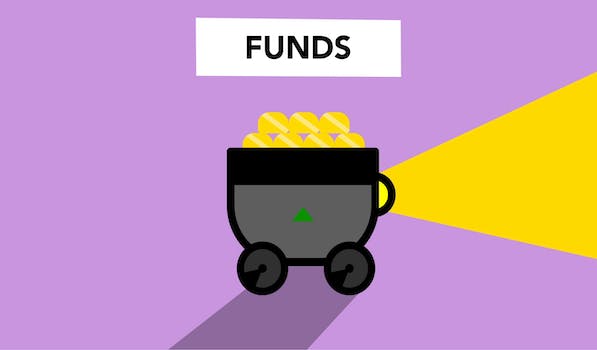How To Save Money Monthly Budget
“Master your finances and save big with these monthly budget tips.”
Introduction
Introduction: Saving money is an essential aspect of financial planning. It helps you to achieve your financial goals and secure your future. One of the best ways to save money is by creating a monthly budget. A monthly budget helps you to track your expenses and income, and it enables you to identify areas where you can cut back on spending. In this article, we will discuss how to save money by creating a monthly budget.
10 Simple Ways to Cut Expenses and Save Money on Your Monthly Budget
Managing your monthly budget can be a daunting task, especially when you have a lot of expenses to take care of. However, with a little bit of planning and discipline, you can save money and cut down on your expenses. Here are ten simple ways to cut expenses and save money on your monthly budget.
1. Create a budget plan
The first step to saving money is to create a budget plan. This will help you keep track of your income and expenses and identify areas where you can cut down on your spending. Start by listing all your sources of income and then list all your expenses, including rent, utilities, groceries, transportation, and entertainment. Once you have a clear picture of your finances, you can start making adjustments to your spending habits.
2. Cut down on eating out
Eating out can be expensive, especially if you do it frequently. Instead of eating out, try cooking at home. This will not only save you money but also allow you to eat healthier and control your portions.
3. Use coupons and discounts
Coupons and discounts can help you save money on your purchases. Look for coupons in newspapers, magazines, and online. You can also sign up for loyalty programs and newsletters to receive discounts and special offers.
4. Cancel subscriptions and memberships
If you have subscriptions or memberships that you don’t use, cancel them. This will help you save money and reduce clutter in your life. You can also look for free alternatives to the services you use.
5. Use public transportation
Using public transportation can help you save money on gas and car maintenance. If you live in a city with good public transportation, consider using it instead of driving.
6. Buy generic brands
Generic brands are often cheaper than name brands and can save you money on your grocery bill. Try buying generic brands for items like cereal, pasta, and canned goods.
7. Cut down on energy usage
Cutting down on energy usage can help you save money on your utility bills. Turn off lights and appliances when you’re not using them, use energy-efficient light bulbs, and adjust your thermostat to save on heating and cooling costs.
8. Shop around for insurance
Shopping around for insurance can help you save money on your premiums. Compare rates from different insurance companies and consider raising your deductibles to lower your premiums.
9. Avoid impulse purchases
Impulse purchases can quickly add up and derail your budget. Before making a purchase, ask yourself if you really need it and if it fits into your budget.
10. Plan ahead for big purchases
If you’re planning to make a big purchase, like a new car or a home, start saving for it in advance. This will help you avoid taking on debt and allow you to negotiate better deals.
In conclusion, saving money on your monthly budget requires discipline and planning. By following these ten simple tips, you can cut down on your expenses and save money for the things that matter most to you. Remember, every little bit counts, so start small and work your way up to bigger savings. Good luck!
Creating a Realistic Monthly Budget: Tips and Tricks

Creating a Realistic Monthly Budget: Tips and Tricks
Saving money is a goal that many people have, but it can be difficult to achieve without a plan. One of the best ways to save money is by creating a monthly budget. A budget can help you track your expenses, identify areas where you can cut back, and ensure that you have enough money to cover your bills and other expenses. Here are some tips and tricks for creating a realistic monthly budget.
1. Determine Your Income
The first step in creating a monthly budget is to determine your income. This includes your salary, any bonuses or commissions, and any other sources of income you may have. Be sure to include all sources of income, even if they are irregular or infrequent.
2. List Your Expenses
Next, make a list of all your expenses. This includes your fixed expenses, such as rent or mortgage payments, car payments, and insurance premiums. It also includes your variable expenses, such as groceries, entertainment, and clothing. Be sure to include all expenses, no matter how small.
3. Categorize Your Expenses
Once you have a list of your expenses, categorize them into groups such as housing, transportation, food, and entertainment. This will help you see where your money is going and identify areas where you can cut back.
4. Set Priorities
After categorizing your expenses, set priorities for each category. For example, if you spend a lot of money on entertainment, you may want to prioritize your spending on necessities such as food and housing.
5. Create a Budget
Using the information you have gathered, create a budget for each category. Be sure to include all expenses and prioritize your spending. You may need to adjust your budget as you go, but having a plan in place will help you stay on track.
6. Track Your Spending
Once you have created a budget, track your spending to ensure that you are sticking to it. This can be done using a spreadsheet, a budgeting app, or even a pen and paper. Be sure to record all your expenses and compare them to your budget regularly.
7. Cut Back Where You Can
If you find that you are spending more than you budgeted for in a particular category, look for ways to cut back. This may mean eating out less often, finding a cheaper gym membership, or shopping for groceries at a discount store.
8. Be Realistic
When creating a monthly budget, it is important to be realistic. Don’t set unrealistic goals or try to cut back too much too quickly. Instead, make small changes over time and adjust your budget as needed.
In conclusion, creating a monthly budget is a great way to save money and achieve your financial goals. By determining your income, listing your expenses, categorizing your expenses, setting priorities, creating a budget, tracking your spending, cutting back where you can, and being realistic, you can create a budget that works for you. Remember, it may take some time to get used to living on a budget, but the benefits are well worth it.
The Importance of Tracking Your Spending to Save Money
Saving money is a goal that many people have, but it can be difficult to achieve without a plan. One of the most important steps in creating a budget and saving money is tracking your spending. By keeping track of where your money is going, you can identify areas where you can cut back and save more.
The first step in tracking your spending is to gather all of your financial information. This includes bank statements, credit card statements, and receipts. You can use a spreadsheet or a budgeting app to organize this information and categorize your expenses.
Once you have all of your financial information organized, it’s time to start tracking your spending. This means recording every purchase you make, no matter how small. You can do this by keeping a notebook with you at all times or by using a budgeting app that allows you to input your expenses as you make them.
Tracking your spending can be eye-opening. You may be surprised to see how much money you’re spending on things like eating out or buying coffee. By identifying these areas where you’re overspending, you can make changes to your habits and save money.
One of the benefits of tracking your spending is that it allows you to set realistic goals for your budget. If you’re spending $500 a month on groceries, for example, you may want to set a goal of reducing that to $400 a month. By tracking your spending and setting goals, you can create a budget that works for you and helps you save money.
Another benefit of tracking your spending is that it helps you stay accountable. When you know that you’re recording every purchase you make, you’re more likely to think twice before making an impulse buy. This can help you avoid overspending and stay on track with your budget.
Tracking your spending also allows you to see where you’re making progress. If you set a goal to reduce your grocery spending to $400 a month and you’re able to achieve that, you can feel proud of your accomplishment. This can motivate you to continue making changes and saving more money.
In addition to tracking your spending, there are other steps you can take to save money. One of the most effective is to create a budget. A budget allows you to see exactly how much money you have coming in and going out each month. This can help you identify areas where you can cut back and save more.
When creating a budget, it’s important to be realistic. Don’t set goals that are too ambitious or that you know you won’t be able to achieve. Instead, start small and make changes gradually. This will help you build momentum and stay motivated.
Another way to save money is to look for ways to reduce your expenses. This could mean cutting back on eating out, canceling subscriptions you don’t use, or finding ways to save on your utility bills. By making small changes to your habits and expenses, you can save a significant amount of money over time.
In conclusion, tracking your spending is an essential step in creating a budget and saving money. By recording every purchase you make and identifying areas where you’re overspending, you can make changes to your habits and save more money. In addition to tracking your spending, creating a budget and looking for ways to reduce your expenses can help you achieve your financial goals and build a more secure future.
How to Save Money on Groceries: Smart Shopping Strategies
Saving money is a goal that many people have, but it can be difficult to achieve without a plan. One of the best ways to save money is by creating a monthly budget. A budget can help you track your expenses and identify areas where you can cut back. One of the biggest expenses for most people is groceries. However, there are several smart shopping strategies that can help you save money on groceries.
The first step to saving money on groceries is to plan your meals. By planning your meals, you can create a shopping list and avoid buying unnecessary items. You can also take advantage of sales and coupons by planning your meals around them. For example, if chicken is on sale, you can plan to make several meals that include chicken.
Another way to save money on groceries is to buy in bulk. Buying in bulk can be a great way to save money, especially on non-perishable items like rice, pasta, and canned goods. However, it’s important to only buy what you will use. Buying in bulk can be a waste of money if you end up throwing away food that has gone bad.
Shopping at discount stores can also help you save money on groceries. Discount stores often have lower prices than traditional grocery stores. However, it’s important to compare prices and make sure you are getting a good deal. Some discount stores may have lower prices on certain items, but higher prices on others.
Using coupons can also help you save money on groceries. Many grocery stores offer coupons that can be used to save money on specific items. You can also find coupons online or in the newspaper. However, it’s important to only use coupons for items that you would normally buy. Using coupons for items that you don’t need can actually end up costing you more money.
Shopping at farmer’s markets can also be a great way to save money on groceries. Farmer’s markets often have lower prices than grocery stores, and the produce is usually fresher. You can also support local farmers by shopping at farmer’s markets.
Finally, it’s important to avoid impulse purchases. Impulse purchases can quickly add up and blow your budget. Before making a purchase, ask yourself if you really need the item. If the answer is no, put it back on the shelf.
In conclusion, there are several smart shopping strategies that can help you save money on groceries. By planning your meals, buying in bulk, shopping at discount stores, using coupons, shopping at farmer’s markets, and avoiding impulse purchases, you can significantly reduce your grocery bill. With a little bit of effort and planning, you can stick to your monthly budget and achieve your savings goals.
Maximizing Your Savings: Using Coupons and Cashback Apps
Saving money is a goal that many people have, but it can be difficult to achieve without a plan. One way to start saving money is by creating a monthly budget. A budget can help you track your expenses and identify areas where you can cut back. In addition to creating a budget, there are other ways to maximize your savings, such as using coupons and cashback apps.
Coupons are a great way to save money on groceries, household items, and other purchases. You can find coupons in newspapers, magazines, and online. Some stores also offer their own coupons that you can use in-store or online. When using coupons, it’s important to read the fine print to make sure you’re using them correctly. Some coupons have restrictions on the items you can purchase or the quantity you can buy.
Another way to save money is by using cashback apps. Cashback apps allow you to earn money back on your purchases. You can use these apps to earn cashback on groceries, clothing, and other purchases. Some popular cashback apps include Ibotta, Rakuten, and Swagbucks. To use these apps, you’ll need to create an account and link your credit or debit card. When you make a purchase at a participating store, you’ll earn cashback that you can redeem for gift cards or cash.
When using coupons and cashback apps, it’s important to stay organized. Keep your coupons in a folder or binder so you can easily find them when you need them. Make a list of the items you need to purchase and check your coupons and cashback apps to see if there are any deals available. When using cashback apps, make sure you’re using the correct card and that the store you’re shopping at is participating in the program.
In addition to using coupons and cashback apps, there are other ways to save money on your monthly expenses. One way is to cut back on eating out. Eating out can be expensive, so try cooking at home more often. You can also save money on your utility bills by turning off lights and electronics when you’re not using them. Another way to save money is by shopping around for insurance and other services. You may be able to find a better deal by switching providers.
When creating your monthly budget, make sure you’re including all of your expenses. This includes rent or mortgage payments, utilities, groceries, transportation, and any other bills you have. Once you’ve identified your expenses, look for areas where you can cut back. This may mean reducing your grocery budget or finding ways to save on your utility bills.
In conclusion, creating a monthly budget is a great way to start saving money. By using coupons and cashback apps, you can maximize your savings and get more for your money. It’s important to stay organized and keep track of your expenses to make sure you’re staying within your budget. With a little effort and planning, you can achieve your savings goals and enjoy a more financially secure future.
Conclusion
Conclusion: To save money on a monthly budget, it is important to track your expenses, create a budget, prioritize your spending, and look for ways to cut costs. By making small changes to your spending habits and being mindful of your financial goals, you can successfully save money and improve your financial well-being.





